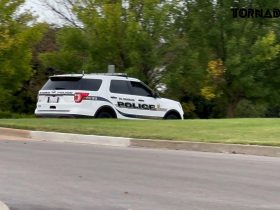Using a newly released NASA photograph, researchers claim to have observed the first-ever debris cloud from a celestial collision. Astronomers from the University of Arizona reported a transit, in which a debris cloud passes in front of a star and temporarily blocks light, in The Astrophysical Journal earlier this month.
NASA shares historic debris clouds from collision
Early impacts in the solar system molded or produced many rocky planets and satellites, including Earth and the Moon. In the process of colliding, rocky things can either gather additional material and become larger, or they can fragment into many smaller ones.
According to Jet Propulsion Laboratory, astronomers using NASA’s Spitzer Space Telescope have previously uncovered evidence of collisions of this type around young stars where rocky planets are beginning to develop. However, the observations didn’t provide much information about the collisions, such as the size of the items involved in the collisions.
New research in the Astrophysical Journal shows for the first time that a debris cloud from one of these collisions was observed passing in front of its star and temporarily blocking the light. This phenomenon is referred to as a transit by astronomers. Data on the star’s mass and brightness helped researchers immediately measure the cloud’s size after a collision, as well as estimate the size of objects that crashed with it, and observe how quickly the cloud dissipated.
According to a statement from co-author George Rieke of the study, prior Spitzer investigations have yielded only theoretical speculations regarding the explosion and debris cloud.
Observation of 10 million-year-old star called HD 166191
As reported by FOX News, a star known as HD 166191 was first observed in 2015 by a team of researchers. Over the following four years, the team used the Spitzer telescope to make more than 100 observations of the system. Dust from the star’s birth has solidified at this point in time, resulting in the development of planetesimals.
There are more disastrous accidents as the gas that filled the area disperses. The infrared light captured by the telescope is suitable for identifying the vast amounts of dust produced by these collisions. In 2018, the telescope observed a rise in the brightness of the star system, which the agency interpreted as an increase in the amount of debris being produced by the system. The telescope also discovered a cloud of debris that was obscuring the star.
The cloud was discovered to be extraordinarily extended, with an estimated area three times that of the star. The debris was hundreds of times larger than HD 166191. NASA claimed the colliding particles had to be dwarf planets’ size to form such a cloud.
READ MORE:















Leave a Reply